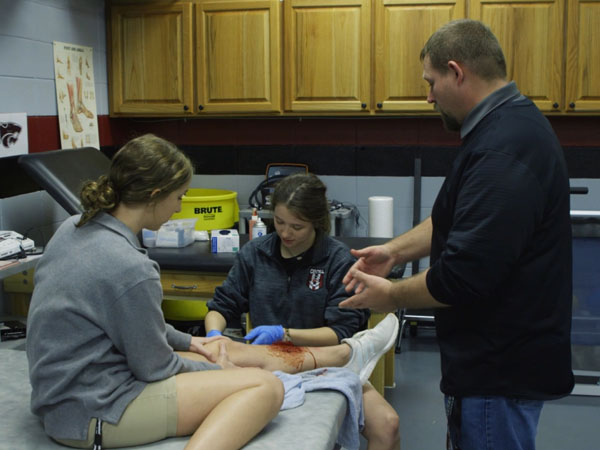By |
CENTRAL, La. – Whether a student wants to pursue a profession in the medical field or simply prepare for life’s curveballs, the Central High School first responder and EMT classes are a popular choice.
The popular classes are taught by EMT and first responder Bryan Hutson. The first responder class is offered to sophomores and juniors, and it is a prerequisite for the EMT class, which is available to juniors and seniors.
The two classes qualify as career technical education (CTE) electives at the high school, and they are designed to help students develop valuable skills and prepare them for a rewarding career in any of the many medical-related jobs, such as emergency responders, nursing, firefighting, and many others.
“Our students are learning important lifesaving skills in our first responder class. They can gain some basic certifications that can truly help them,” Hutson said. “But if they get into this class and find out that they like the fast-paced world of emergency medicine, we encourage them to progress into our EMT class.”
Hutson said Central High’s EMT course is a dual-credit class with Baton Rouge Community College.
“The EMT class is a five-credit class at the community college. There’s no better start for someone who is thinking about a career in emergency medicine than to take this class, get those five credits out of the way, and get a solid start on their career,” he said.
“We are working with professionals to strengthen our school-to-career curriculum tracks at the high school,” Superintendent Jason Fountain said. “We want to find more ways to engage our students in coursework that excites them and offers them greater insight into their futures.”
Hutson said students learn about health as well as how to be prepared in case of an emergency. By the end of the two classes, the students are certified in adult and infant CPR, and basic first aid.
Some of the more advanced skills taught in the EMT class include how to use an automated external defibrillator (AED), how to give oxygen therapy, how to pack and bandage severe wounds, and how to respond to a heart attack or stroke.
Students can enroll in the first responder class, then advance to the Emergency Medical Responder course, to earn a series of medical certifications and college credit toward a degree in paramedic medicine or emergency medical technician. A student must be 18 years of age before his or her EMT national exam score will be counted. The class can be taken and completed prior to turning 18 – but the scores will be held until that time.
Hutson said jobs associated with these skills include licenses practical and vocational nurses, medical and health service managers, EMTs and paramedics, occupational health and safety specialists, ambulance drivers, fire department responders and industrial safety managers.
Pictured: CHS students Gracie Stevens (left) and Ashlyn Rogers (right) learning how to pack and bandage wounds in their EMT class, taught by first responder and EMT Bryan Hutson (standing).



0 comments